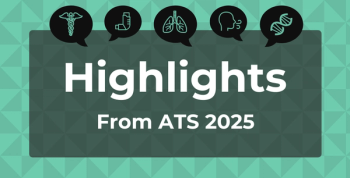
AI Tools Reduce Burnout in Health Care Workers
Key Takeaways
- Combining demands and control components in digital interventions significantly reduces burnout, anxiety, and emotional exhaustion among healthcare workers.
- The study involved 297 Swedish healthcare workers, testing five components: engagement, demands, control, journaling, and psychoeducation.
Digital tools help prevent burnout, anxiety, and exhaustion among health care workers.
Work stress remains a major cause of burnout and
The findings of this study are published in
“Our findings indicate that combining demands and control components yields the strongest benefits for mental health outcomes,” wrote the researchers of the study. “Similarly, the synergy between demands and engagement as well as between journaling and psychoeducation demonstrates improvements in participant health relative to other types of content.”
Digital health tools, particularly those powered by artificial intelligence (AI), are increasingly recognized for their potential to alleviate provider burnout and enhance clinical workflows.2 As the health care industry continues to face workforce shortages and increasing demands, the adoption of digital health tools offers a promising strategy to support clinicians and improve the efficiency and quality of care delivery.
The study aimed to evaluate the effectiveness of 5 digital intervention components aimed at improving stress management among Swedish health care workers.1 A total of 297 participants were randomly assigned to different versions of the intervention, each containing unique combinations of the 5 components: engagement, demands, control, journaling, and psychoeducation. The engagement and demands components encouraged participants to reflect on their work motivation and challenges, while the control component provided actionable strategies for job crafting and detachment. The journaling component supported deeper self-reflection, and the psychoeducation component offered evidence-based guidance for managing stress. Stress-related health outcomes—including burnout, anxiety, and depression—were measured through standardized questionnaires administered before, immediately after, and 1 month following the intervention.
The study found that the most effective combination of digital intervention components for reducing stress-related symptoms among health care workers included both the demands and control modules. When these 2 components were used together, participants reported significant improvements in several key outcomes: increased social support (β = 0.68; P < .001) and job crafting (β = 0.41; P = .06) during the intervention, as well as reduced emotional exhaustion (β = –0.50; P = .005), burnout (β = –0.54; P = .004), and anxiety (β = –0.44; P = .04) afterward. Interestingly, including only one of these components—without the other—resulted in worse outcomes than omitting both. The researchers also observed increases in mindfulness when the engagement and demands components (β = 0.72; P = .001) or the journaling and psychoeducation components (β = 0.46; P = .04) were included together.
However, the researchers noted several limitations. The intervention showed relatively small effects, which may be expected for a preventive approach but make interpretation challenging. The use of an arbitrary threshold to identify key effects limited methodological rigor, and participant dropout reduced statistical power despite no major bias detected. The short, 1-month follow-up prevented assessment of long-term benefits, and data collection during the COVID-19 pandemic may have limited generalizability to typical work conditions.
Despite these limitations, the researchers believe the study’s findings suggest that combining self-reflective elements with actionable strategies through digital health tools yields the strongest benefits for preventing stress-related health problems among health workers.
“Simply prompting participants to engage in self-reflection may not be sufficient; it is also necessary to help participants integrate these insights into empowering beliefs and behaviors,” wrote the researchers. “By integrating aspects, such as self-reflection, helpful framing, and actionable steps, the intervention uses several avenues for supporting participants in improving their ways of managing stress.”
References
1. Kowalski L, Finnes A, Koch S, et al. Optimizing intervention components of a preventive stress management mHealth intervention for health care workers: experimental factorial study. JMIR Form Res. 2025;9:e71032. doi:10.2196/71032
2. Grossi G, Speicher S, Estep K. AI-driven clinical support tools show promise in alleviating provider burnout and workflow challenges. AJMC®. May 12, 2025. Accessed October 16, 2025.
Newsletter
Stay ahead of policy, cost, and value—subscribe to AJMC for expert insights at the intersection of clinical care and health economics.








































